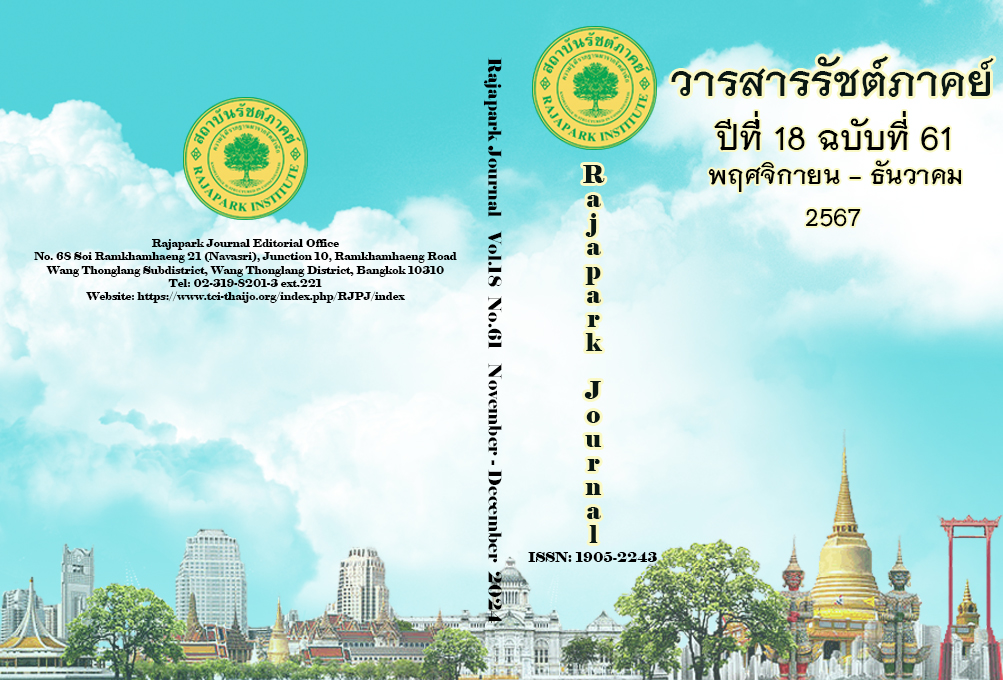Causal Factors of Digital Marketing Affecting Business Performance of Small and Medium Businesses in The Upper Northern Region
Main Article Content
Abstract
This study aims to investigate the causal factors of the impact of digital marketing on the operational efficiency of small and medium-sized enterprises in northern provinces. The informant consists of five senior and middle-level managers. The results were analyzed through in-depth interviews to identify the relevant variables. A population sample of 420 individuals was surveyed using a questionnaire that included five estimated scales. Basic data were analyzed using measures such as the mean, standard deviation, popularity, correlation coefficient analysis, confirmatory factor analysis, and model suitability evaluation. The analysis was conducted using SPSS software. Data analysis revealed that digital marketing factors significantly impact the operational efficiency of small and medium-sized enterprises (SMEs) in the northern provinces. These factors include executive support, corporate culture, corporate logistics, corporate technical skills, and the success of digital marketing initiatives. The study found that these variables affect the operational efficiency of SMEs in the upper northern provinces by 0.57%, 0.55%, 0.60%, 0.62%, and 0.70%, respectively. Digital marketing plays a crucial role in expanding businesses and connecting with customers. It utilizes various tools such as Facebook, Google, Shopee, and Lazada, along with search engine optimization (SEO) to enhance visibility on online platforms.
Article Details

This work is licensed under a Creative Commons Attribution-NonCommercial-NoDerivatives 4.0 International License.
Views and opinions appearing in the Journal it is the responsibility of the author of the article, and does not constitute the view and responsibility of the editorial team.
References
Ajdarovska, Z., & Attar, M. (2020). Analysing the relationship between organisational culture and organisational ambidexterity. Business and Management Studies, an International Journal, 8(3), 3550-3581. DOI:10.15295/bmij.v8i3.1534
Angsuchoti, S. et al. (2014). Analytical statistics for social science and behavioral science research: LISREL program techniques (4th ed.). Charoendeemankong.
Bartlett, M. S. (1950). Tests of significance in factor analysis. British Journal of Statistical Psychology, 3(2), 77-85. https://doi.org/10.1111/j.2044-8317.1950.tb00285.x
Beyene, T. (2011). Diagnosing Ercoe’s organizational culture and indicating members’ preferred culture. Journal of Asian Business Strategy, 1(5), 73–77. https://archive.aessweb.com/index.php/5006/article/view/4005
Boulding, K. E. (1956). General systems theory—the skeleton of science. Management Science, 2(3), 197–208. http://www.jstor.org/stable/2627132
Chaffey, D., & Ellis-Chadwick, F. (2019). Digital marketing: strategy and implementation. Pearson Education.
Hassan, S. (2021). Organizational effectiveness in both private and publish sectors in Iraqi Kurdistan, the role of organization culture and leadership will be investigated. The Turkish Journal of Computer and Mathematics Education, 12(2), 218-238.
Kannan, P.K., & Li, H.A. (2017). Digital marketing: a framework, review and research agenda. International Journal of Research in Marketing, 34, 22-45. https://doi.org/10.1016/j.ijresmar.2016.11.006
Kingsnorth, S. (2019). Digital marketing strategy: an integrated approach to online marketing. Kogan Page Publishers.
Kraus, S., Palmer, C., Kailer, N., Kallinger, F.L., & Spitzer, J. (2019). Digital entrepreneurship: a research agenda on new business models for the twenty-first century. International Journal of Entrepreneurial Behavior and Research, 25(2), 353-375.
Mullen, J., & Daniels, M. (2011). Digital marketing in direct marketing. Direct Marketing Journal, 5(1), 45-59.
Novak, T.P., Hoffman, D.L., & Yung, Y.F. (2000). Measuring the customer experience in online environments: A structural modeling approach. Marketing Science, 19, 22-42. http://dx.doi.org/10.1287/mksc.19.1.22.15184
Qazi, S., Miralam, M.S., & Bhalla, P. (2017). Organizational culture and job satisfaction: A study of organized retail sector. Journal of Business & Retail Management Research, 12(1), 215-224. DOI:10.24052/JBRMR/V12IS01/OCAJSASOORS
Stacho, Z., Stachová, K., Hudakova, M., & Stasiak-Betlejewska, R. (2017). Employee adaptation as key activity in human resource management upon implementing and maintaining desired organisational culture. Serbian Journal of Management, 12(2). DOI:10.5937/sjm12-10340
The Organisation for Economic Co-operation and Development (OECD). (2019). OECD SME and entrepreneurship outlook 2019. OECD iLibrary. https://doi.org/10.1787/34907e9c-en
Vinerean, S., & Opreana, A. (2021). Measuring customer engagement in social media marketing: A higher-order model. Journal of Theoretical and Applied Electronic Commerce Research, 16(7), 2633-2654. https://doi.org/10.3390/jtaer16070145
Warren, K. (2014). Systems theory in management practice. International Journal of Management Theory, 8(3), 154-170.
Zeng, S., Xie, X., Tam, C., & Wan, T. (2009). Relationships between business factors and performance in internationalization: An empirical study in China. Management Decision, 47(2), 308-329. DOI:10.1108/00251740910938939


